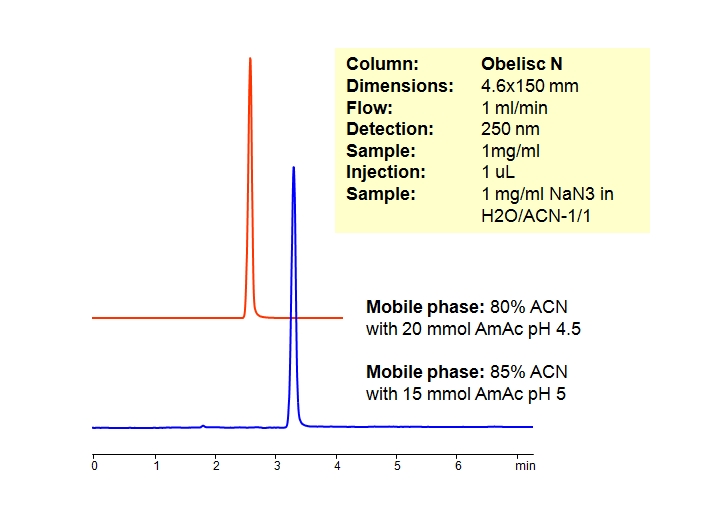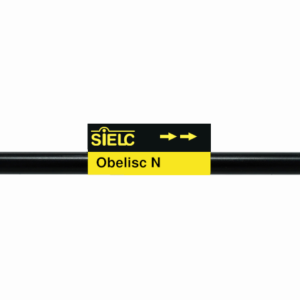Sodium azide is a salt of weak hydrazoic acid with pKa 4.5-4.7.
Sodium azide is very toxic. It is typically used as a stabilizer for aqueous solution to suppress bacteria grows.
Chromatography separation is based on weak ionic interaction of the partially ionized hydrazoic acid with positively charged column surface. Additional polar interaction is a result of high acetonitrile concentration in the mobile phase.
| Column | Obelisc N, 2.1×150 mm, 5 µm, 100A |
| Mobile Phase | MeCN |
| Buffer | AmAc |
| Flow Rate | 1.0 ml/min |
| Detection | UV, 250 nm |
<
| Class of Compounds |
Base, Hydrophobic, Ionizable |
| Analyzing Compounds | Azide |
Application Column
Obelisc N
SIELC has developed the Obelisc™ columns, which are mixed-mode and utilize Liquid Separation Cell technology (LiSC™). These cost-effective columns are the first of their kind to be commercially available and can replace multiple HPLC columns, including reversed-phase (RP), AQ-type reversed-phase, polar-embedded group RP columns, normal-phase, cation-exchange, anion-exchange, ion-exclusion, and HILIC (Hydrophilic Interaction Liquid Chromatography) columns. By controlling just three orthogonal method parameters - buffer concentration, buffer pH, and organic modifier concentration - users can adjust the column properties with pinpoint precision to separate complex mixtures.
Select optionsHydrazoic acid
Sodium azide






